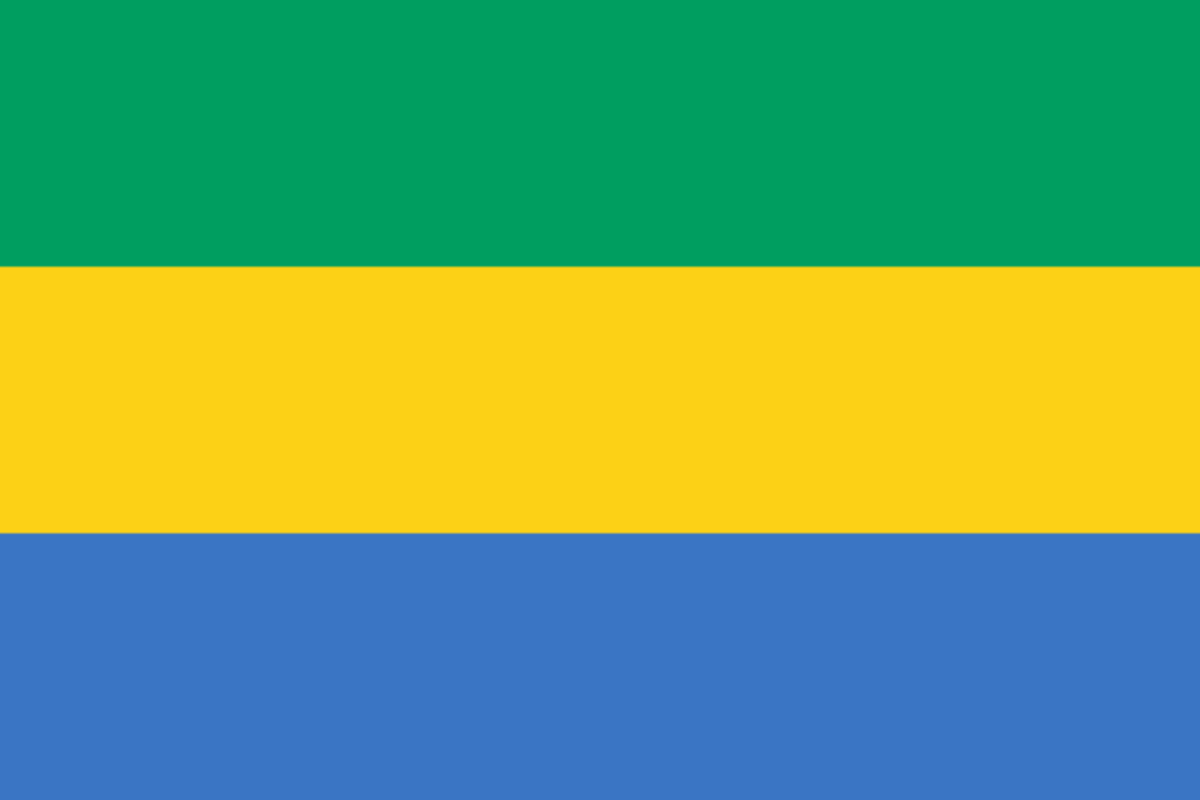The national animal of Gabon is the black panther. This is a melanistic variation of the leopard. They are important national symbols in the country and symbolize many aspects of Gabonese culture and values. Though not a species in its own right, the black panther nonetheless plays a specific symbolic role that the ordinary leopard does not.
Black panthers are among the most iconic big cats in the world, though there’s often confusion about what exactly the black panther represents.
Again, they are not a species in and of themselves but rather just a melanistic variation of the leopard which is common in many parts of Africa.
Let’s find out more.

What is the national animal of Gabon?
The national animal of Gabon is the black panther, a melanistic variation of the leopard.
These variations can appear completely black, though they usually do still exhibit the typical rosettes of the leopard and jaguar species.
They are mostly documented in tropical rainforests.
Their melanism is caused by a recessive allele in leopards.
So, it is something like a genetic mutation.
They were first described by Jean-Claude Delamétherie in 1788, where one was kept in the tower of London which had been brought from Bengal.
Scientific names were later proposed for the specific black species.
By the late 19th Century, it had been commonly reported that black individuals would be born in the litter of otherwise spotted leopards.
So, it eventually became clear that it was a variation in the coat rather than a distinct species.
In terms of behavior and diet, then, they are no different to leopards.
Leopards have soft and thick fur.
They are slender and muscular, with relatively short limbs and a large head.
They are very sexually dimorphic and males are usually considerably larger and heavier.
Males usually stand around 24 to 48 inches at the shoulder, with females slightly smaller at around 22 to 25 inches.
They are anywhere from 36 to 73 inches long, with a tail around 26 to 40 inches long.
They have the largest distribution of all wild cats, occurring across Africa and Asia, though populations are in decline.
They are solitary animals and highly territorial; the only exceptions would be a mother raising its cubs.
Mothers generally spend up to two years raising their cubs before they are ready to become fully independent.
They are opportunistic hunters and are known to target livestock and even humans in some cases.
Why is the black panther the national animal of Gabon?
The black panther in particular represents many important things to the people of Gabon.
They are important symbols of strength and courage, embodying this important value of the Gabonese people.
They are incredibly powerful hunters, yet at the same time they are graceful stalkers, able to silently move through forests without being noticed or heard.
In this way, then, they are also seen as silent spirits of the forests and other environments that they inhabit.
On the other hand, then, they are seen as embodiments of the natural beauty of Gabon.
The black panther specifically is an incredibly striking animal, with their sleek dark coats being a symbol of the natural beauty of the landscape of Gabon.
Of course, leopards embody this too, but in many ways the black panther has come to hold a more important and special place among the naturally occurring predators of Gabon.
There is, also, the question of conservation, and this speaks to the broader leopard species.
Though black panthers are just a variation of leopards, the species as a whole is at risk.
They are considered vulnerable by the IUCN Red List due to many factors like illegal hunting and the destruction of their habitat.
Making them the national animal is a way to bring attention to this fact.
Is a black panther a jaguar or a leopard?
The term “black panther” is used to describe melanistic variations of both leopards and jaguars.
In Gabon, then, and Africa in general, when you hear the term “black panther” they are describing a leopard.
But the same term is also used for a jaguar in South America.
There are, then, melanistic variations of both species, and the term “panther” is used to describe both of them.
This, again, is not really a strictly zoological or taxonomical term; it is simply a popular term for the elusive black variation.
Is the black panther a real animal?
Black panthers are real in the sense that they do really exist and are even relatively common.
They are not, though, a distinct species in their own right; they are simply a variation of multiple species of big cat like leopards and jaguars.
Naturally, they are considerably rarer than spotted leopards of ordinary color, and it’s a debate about whether the black gives them an advantage or a disadvantage in hunting and camouflage over their spotted brothers and sisters.
It may be that being fully black, in some cases, would help them to hunt, especially in the dark; but at other times and places it could represent an added difficulty in not being spotted.
So, again, just to be clear, the black panther is not a species in its own right but simply a variation of the leopard—at least in Africa.
In South America, black variations of the jaguar also exist.
The black panther nonetheless plays a specific symbolic role that the leopard does not exactly replicate, though of course, both animals are important to Gabonese culture.

